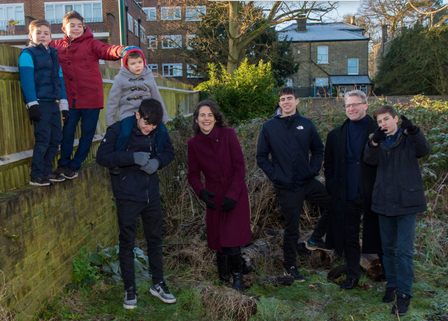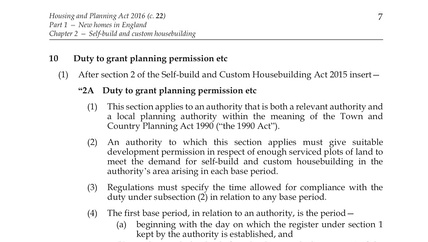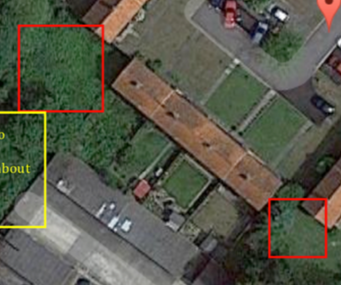Stay at home mother of six boys, Anne Fennell found it difficult either to rent or buy. She finally came round to her husband’s suggestion that they try and build their own home...

Diary of a wannabe self builder
I’m not a real self builder. I never watched Grand Designs, had no pretensions to a dream home and never believed I had either the taste or capability – I do have an architect but never thought to commission him.
The day our landlord wanted our house back seemed a dark day. The house was two doors from my parents, we were well established in the neighbourhood, close to the primary school, friends, our church, the boys attached to the local rugby and football club, I was engaged in the community. We wanted to stay in the area but could not afford the prices to buy and renting now with six boys was proving somewhat challenging. It was then that my husband suggested we explore self building. The idea was not an appealing one. He seemed to be suggesting the impossible – where on earth would we find land? How do you fund such a project?
It was at this point that a builder friend sent me an article on the ‘Right to Build’ legislation. This pioneering piece of legislation gave us the impetus to start and a direction to follow…
“We are also facing, as a nation, a serious housing problem that is going nowhere. Self build is not about a handful of people fulfilling their Grand Designs fantasies – government needs to make it a normal, mainstream choice, empowering people to build, those who have been socially marginalised.”
Richard Bacon MP Ambassador for Right to Build
The Turning Point

“You won’t get another fantastic opportunity like this at this price… It will be gone in days,” went the estate agent’s pitch. The fantastic opportunity was a tiny ex-local authority 2-up-2-down terraced house with a loft extension, in an estate that would have been nice apart from the unkempt gardens, rubbish in the driveways and furniture in the backyards. And it was only half a million pounds. I felt slightly sick at heart as the knot inside me tightened – I couldn’t quite bring myself to believe that this was the answer to our housing need.
We’d spent months looking for a new home. Our landlord of 10 years wanted his house back and in our search we decided to explore all options. Ideally we wanted to buy in the same area, so that we could stay close to our parents, not only to benefit from their help while the children were young but also to be useful to them as they grew older, and to remain in the community we had grown attached to and engaged in over two decades of marriage.
But buying in London suburbs is not easy, and with inflated house prices and a large family the options are extremely limited. What little that was suitable and in our price range was snapped up quickly.
A few weeks before I’d found a sweet ex-authority cottage in a nice setting that we could just about afford and I was determined to make an offer. But it was tiny, with two bedrooms and the potential to extend upwards. The downstairs floorspace was also small, but to me it didn’t matter as I thought we could make it work.
However, my husband Peter is an architect and he didn’t agree. His view was that the house couldn’t really cope with extending and although it would be ‘permitted’, that is allowable from a planning point of view, we would be the first in the block to do it and it would be out of place.
In reality, even when extended it would have been too tight for a family of six boys. I looked at Help to Buy but the homes within our price range were unsuitable apartments characterised as ‘luxury’, which in reality meant a few shiny taps and shiny floors, tiny box rooms and an enormous visitors’ toilet big enough to sleep two children.
The fall back position was to rent again, but rents had also seriously inflated during the 10yrs we were in our home. Houses for rent were obviously in short supply as they quickly disappeared off the market, despite huge upfront agency costs.
But there were other barriers. For us it was our children or rather the fact that we have six of them, and all boys. Each time I mentioned how many we had (and I never mentioned it until I had to, but one can hardly hide it) the conversation changed. Was I was on benefits? Was I sure I wasn’t? Appointments to view houses were cancelled and, on one occasion, a holding deposit was given back to me because the landlady decided the kitchen was too small. I felt humiliated and never wanted to be in this position again.
The Right to Build

Our prospects were bleak, but while standing in the tiny house looking at the dismal surroundings I had a change of heart and a spurt of determination. Peter had encouraged me to look at building our own house, and I’d talked to a few friends and looked at a few auction sites but had never really taken it seriously as a realistic option. But I decided to think again.
We lived in London, so where would we find the land? How could we afford to build? Most of our friends had said it was impossible. The obstacles and efforts had simply seemed too enormous. But now I was determined to give it a good try and at least if we did end up in the tiny house on the estate we would know that we had tried everything.
I wrote to an old friend who was a small builder/developer and asked for his advice. On the first day of the New Year he wrote back, saying, “Very exciting to be looking at building your own home. It’s not easy finding a plot to be fair, but the Government seems to be more on your side than ever.” And he sent a link to the government press release ‘Boost for aspiring self-builders’. This was an encouraging and rather exciting moment.
The government was trying to help ordinary families build homes in the boroughs they wanted to live in. Councils were required to launch Self Build Registers for people to express an interest, and the Housing and Planning Act 2016 required local authorities to ensure that they had granted ‘permission’ for enough sufficient shovel-ready plots to match the local demand on their register.
What did this mean in practice? Could the council really provide us with a plot? I somehow doubted it but I was determined to find out, so I signed our local Enfield self build register and requested an appointment with our local MP to find out just what the legislation intended.
Searching for Land

My local MP at the time Mr David Burrowes knew little about the Right to Build legislation but said he would try to find out how it could be effective. He believed the local authority would be unlikely to want to help and would want to sell Amy Council land at the highest price for maximum profit. However he gave me the contact details of Enfield’s Head of Development Management – their chief planning officer – so that I could make some headway into the Council.
Meanwhile we started to make our own detective searches into local land in the area. Google maps was a great tool. It was interesting to look at maps with a different eye and little pockets started appearing that just might be possible. We checked these against the Land Registry. One plot that was of interest turned out to be made of two triangles one part private owned and the other Council owned. We also googled ‘ land owned by Enfield Council’ and in a tiny entry amongst 2,300 lines of playgrounds, schools and car parks were a couple of corner plots, listed as ‘vacant land’ – land adjacent to two houses. We noted them down – it was time now to talk to the Council.
Since 2015 the government obliged local authorities to publish this information and introduced a ‘Right to Contest’ (http://www.gov.uk/guidance/right-to-contest). They estimate that 40% developable land is in public hands and if you think that any piece could be put to more productive use you can challenge them to sell.
Keep calling and you will be answered

Getting to speak to Enfield’s Head of Development Management was no easy task. I left several messages and emails. No response. I took some encouragement from listening to how Jamie Oliver got his breakthrough into the River Cafe. He rang every day trying to speak to Ruth Rogers leaving messages until one day he got through and was invited to an interview. It became part of my routine. Every day I rang and left a message. I resolved to make each call as if it were the first time, until one day he happened to pick up the phone. I had caught him unawares but I had got through. He was friendly enough and gave me an appointment for the next week beginning of March.
The meeting however was rather disappointing. He was unaware of the Right to Build legislation and the Registers. However he did mention that our timing was fortuitous as the Council had to work out its approach to the legislation and how to incorporate it into the local plan.
During the meeting we tried to establish if he was the right contact for the Right to Build, but he didn’t know at that point. On a positive note, he looked at the plots of land we had identified and thought they had potential for planning but we would need to speak to the property department about the possibility of purchasing them.
I left feeling uneasy. The process was not going to be an easy one. He did not give us a name there and then and it was unlikely he was going to. Next step: chase him for the contact details.
Visit Anne’s website 'Diary of a Wannabe Self Builder’ here

About Anne Fennell
Wife of an architect, stay at home mother of six boys. Finding it difficult either to rent or buy in the area we had lived in for over 20 years as a family, I finally came round to my husband’s suggestion that we try and build our own home. Haven’t a clue about building but thought I would keep a diary of our journey to chart how we get on and perhaps, if we ever get there, in time it may help others do the same…and if we don’t…well, better to have tried and lost than never to have tried at all.
Anne is Chair of the campaign group Mothers At Home Matter
